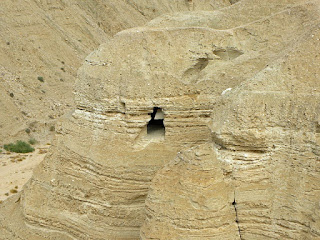Seventy years ago, along the northwest shore of the Dead Sea—thirteen miles from Jerusalem— A Cave of Qumran Bedouin tribesmen entered narrow caves on a cliff and made the greatest manuscript discovery of modern times. Over the next decade, the industrious Bedouins discovered many more scrolls in the caves of Qumran that have become known as The Dead Sea Scrolls. Written on the treated hides of goats, ibex, and gazelles, the scrolls are believed to be the library of a Jewish sect called the Essenes. ibex Hidden from the invading Romans, they lay on the floor in dark caves visited only by occasional rats, worms or other insects, for two thousand years. Rolled up in stone jars, many of them dirty and ragged and mere fragments, the trove produced: • Nineteen copies of the Book of Isaiah that were a thousand years older than any other known copy. • Prophecies by Daniel, Ezekiel, and Jeremiah, never seen before. • Psalms of King David and J...



